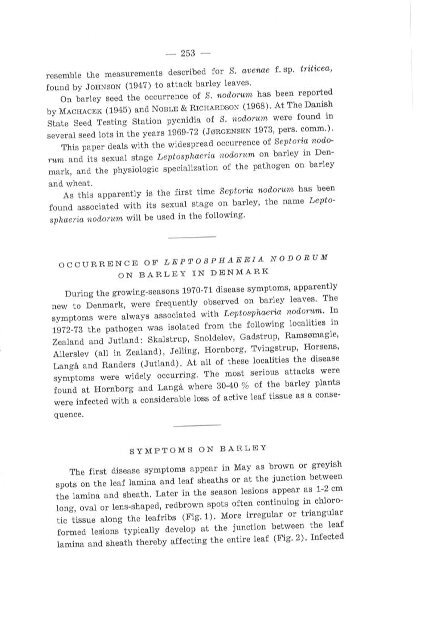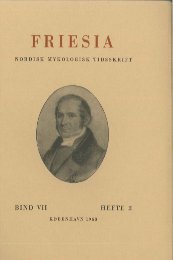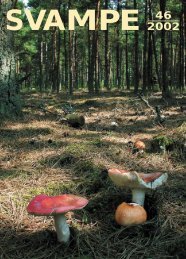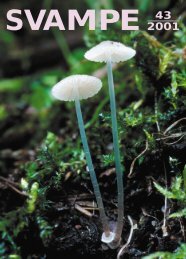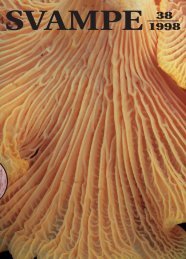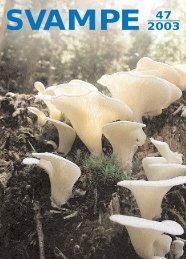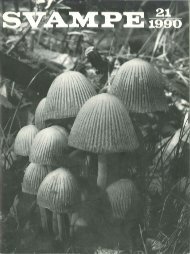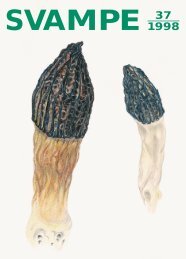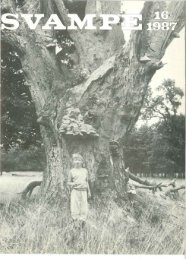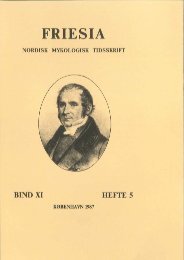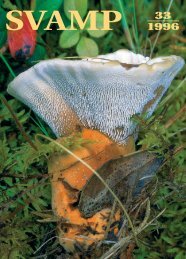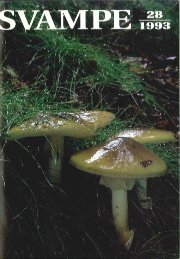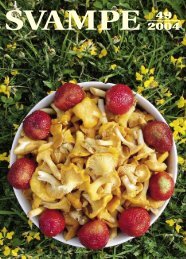Friesia X, 4-5
Friesia X, 4-5
Friesia X, 4-5
Create successful ePaper yourself
Turn your PDF publications into a flip-book with our unique Google optimized e-Paper software.
- 253 -<br />
resemble the measurements deseribed for S. avenae f. sp . tritioea,<br />
found by JOHNSON (1947) to attack barley lea ves.<br />
On barley seed the occurrence of S. nodorum has been reported<br />
by MACHACEK (1945) and NOBLE & RICHARDSON (1968) . At The Danish<br />
State Seed Testing Station pycnidia of S. nodorum were found in<br />
several seed lots in the years 1969-72 (JØRGENSEN 1973, pers. comm.) .<br />
This pap er deals with the widespread occurrence of Septoria nodo<br />
rum and its sexual stage L eptosphaeria nodorum on barley in Den<br />
mark, and the physiologic sp ecialization of the pathogen on ba rley<br />
and wheat .<br />
As t his apparently is the first time Septoria nodorum ha s been<br />
found associated with its sexual stage on barley, the name Lepto<br />
sphaeria nodorum will be used in the following.<br />
OC CURRENCE OF L E P T O S P H A E R I A NODORUM<br />
ON BARLEY IN DENMARK<br />
During the growing-seasons 1970-71 disease symptoms, apparently<br />
new t o Denmark, were frequently observed on barley leaves. The<br />
symptoms were always associated with L eptosphaeria nodorum. In<br />
1972-73 the pathogen was isolated from the folIowing localities in<br />
Zealand and Jutland: Skalstrup, Snoldelev, Gadstrup, Ramsømagle,<br />
Allerslev (all in Zealand) , Jelling, Hornborg, Tvingstrup, Horsens,<br />
Langå and Randers (Jutland). At all of these localities the disease<br />
symptoms were widely occurring. The most serious attacks were<br />
found at Hornborg and Langå where 30-40 % of the barley plants<br />
were infected with a considerable loss of active leaf tissue as a conse<br />
quence.<br />
SYMPTOMS ON BARLEY<br />
The first disease symptoms appear in Mayas brown or greyish<br />
spots on the leaf lamina and leaf sheaths or at the junction between<br />
the lamina and sheath. Later in the season lesions appear as 1-2 cm<br />
long, oval or lens-shaped, redbrown spots often continuing in chloro<br />
tic tissue along the leafribs (Fig. 1) . More irregular or triangular<br />
formed lesions typically develop at the junction between the leaf<br />
lamina and sheath thereby affecting the entire leaf (Fig. 2) . Infected


